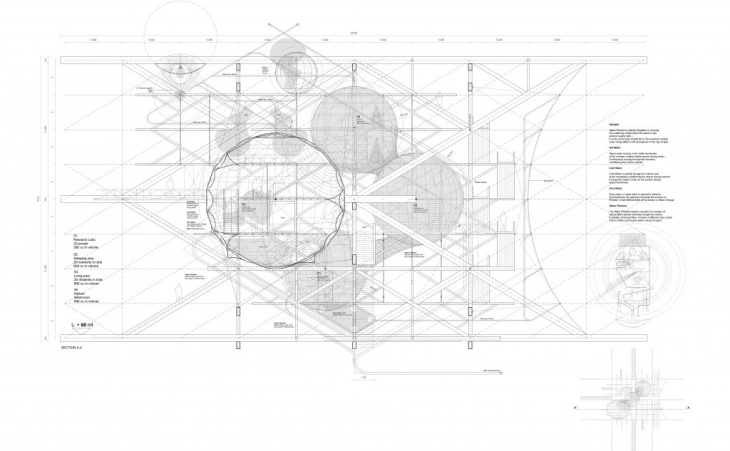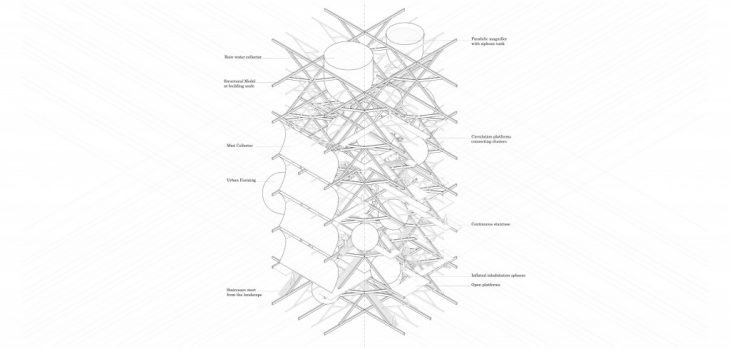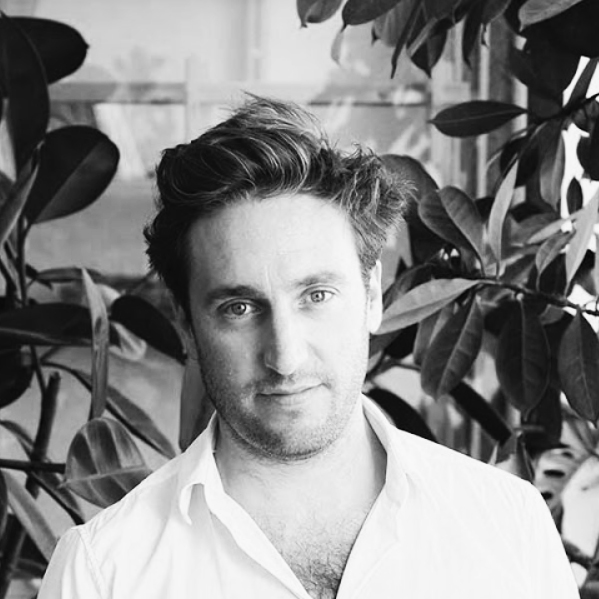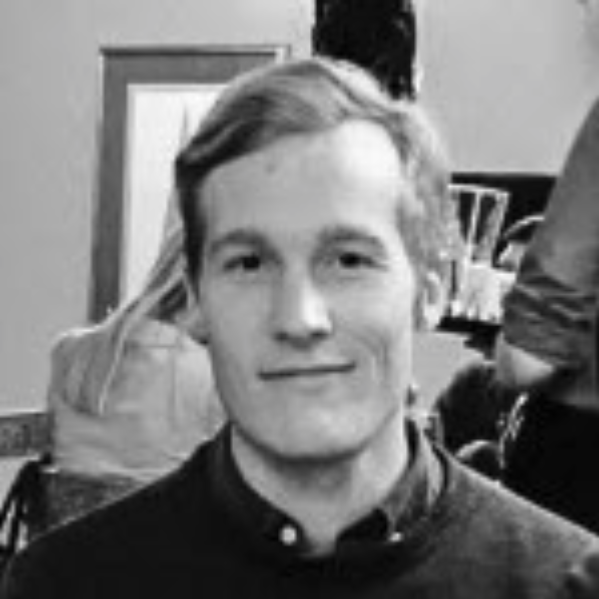SELF SUFFICIENT BUILDINGS
Senior Faculty: Edouard Cabay
Faculty Assistant: Peter Geelmuyden Magnus
 Image Credits: 70% water – Self Sufficient Buildings Studio 2020 – IAAC
Image Credits: 70% water – Self Sufficient Buildings Studio 2020 – IAAC
If we look at history, architecture has never been a result of the only present, but rather of a continuous process of climatic adaptation, held back by the rate of technological development. Today, that rate is exploding, and combined with globalism, we are increasingly distancing ourselves from the millennia of architectural development, moving closer to adopting homogenous, global building standards. According to the Neufert, 22ºC is the comfort standard whether in Siberia where temperatures can drop to -50ºC, or in the Emirates, where they climb up to +50ºC. In this shift, we, as architects, are invited to reconsider the relationship between buildings and their context, thus questioning their patterns of inhabitation.
In the heart of the pandemic, this year’s Self Sufficient Building Studio will approach two building typologies that have merged: living, and working space. Both tend to incarnate this standardization and a certain detachment from their context. The line of research will focus on the design and invention of environments for living and working that emerge from an understanding of the forces of our unique geographies, taking advantage of them in a circular design strategy that seeks for an energetic equilibrium between human beings and their surroundings. Offering a variety of situations, we will use the Metropolitan Area of Barcelona as the ground for our research, inserting our architectural interventions in contexts as different as the Mediterranean sea, the forest of the Collserola parc, the river basin of the Llobregat and the urban, leisure and industrial areas in between them.
During the course, we will develop two building proposals. During the first term, the working methodology is laid out through the design and realisation of a device that is capable to conduct a set of in-depth, empirical experiments on energy and the resulting phenomena. Working with wind, light, temperature and humidity amongst other variables, these devices aim to both stage and measure elemental energy. This device will form the ground for an initial, live+work unit for a single person — a tiny house — as a context-dependent, micro-architectural intervention; a unit that absorbs and channels the energy of an environment towards the emergence of an architectural expression, as well as an inhibition in order to build a symbiotic relationship. Fostering research into energy systems, physical computing, small-scale building structure and materiality, this phase will be concluded with scale 1:10 performative physical models.
The second term will see the development of the initial live-work unit into a large-scale project designed for one to one-hundred inhabitants, further developing the theme of living+working. This phase will focus on the development of strategies addressing energy and its relationship to, for example, structure, facade systems, and services. We will use computational means to generate and optimize spatial layouts, circulation patterns and user interaction. Seeking for self-sufficiency in the complex realm of energy, our architectural interventions will aim to balance production and consumption of energy of the inhabitant, the building, and the place.
 Image Credits: Self Sufficient Buildings Studio 2020 – IAAC
Image Credits: Self Sufficient Buildings Studio 2020 – IAAC
Learning Objectives
At course completion the student will:
- Have experienced all the steps of the development of an architectural project.
- Understanding of an empirical approach into energy and its integration in building.
- Integrate digital fabrication and physical computing into a design process.
- Make performative architectural models.
- Learn how to support research into spatial distribution with computational tools.
- Use parametric modelings in order to develop documents of architectural representation.
- Develop an iterative working process based on the creation and evaluation of design options.
 Image Credits: Self Sufficient Buildings Studio 2020 – IAAC
Image Credits: Self Sufficient Buildings Studio 2020 – IAAC
Faculty

Edouard Cabay is an architect and a senior faculty at IAAC, where he co-directs the 3D Printing Architecture Postgraduate Program as well as the Self Sufficient Building Research Line. He has been a senior faculty at IAAC since 2011.
Alongside his academic work, Edouard has established his design studio Appareil, which develops experimental projects that rely on the use of novel technologies. The studio has won domestic and international competitions, completed small scale architectural and art projects and has been represented in various architecture biennale, exhibitions and publications.
Additionally, he has also been directing the AA Visiting School Barcelona since 2014 and is currently an Invited Professor at CEDIM in Mexico. Edouard Cabay has taught at the Architectural Association as a Diploma Unit Master from 2010 until 2013, at the École Spéciale d’Architecture in Paris as an Associate Professor from 2012 to 2015 and at the École Polytechnique Fédérale de Lausanne as a First Year Studio Director from 2013 to 2016. His work as an architect, a professor or an artist has taken him to Saudi Arabia, Nepal, Russia, Iran, Mexico, Colombia, Morocco, Syria, Bahrain, the Emirates, Georgia, Serbia, Estonia, India, Ecuador, Singapore, Ethiopia, the Philippines, Lebanon, Austria, Norway, Sweden, Switzerland, Spain, Italy, the United Kingdom, Luxemburg, France, Belgium.
Links:
www.appareil.org
www.machinicprotocols.com

Peter Geelmuyden Magnus is a Norwegian architect, designer, inventor and web developer. After completing undergraduate studies at Politecnico di Milano and UPC, he earned his second master’s degree at IAAC Barcelona in 2016, focusing on computational design and parametric urbanism. He has since worked as an architect and computational design expert at Carlo Ratti Associati, working on several high-profile projects such as the renovation of the Rockefeller Centre’s Top of the Rock visitors centre in New York and the new Northvolt factory in Sweden. Peter is currently a regular collaborator on design and research projects with architecture and innovation firm, Appareil in Barcelona. In the fall of 2018 Peter joined the IAAC as a teaching assistant, where he helps train the next generation of architects in advanced architectural logics and tools. In parallel, Peter directs Hable, a web design/development studio in Barcelona.